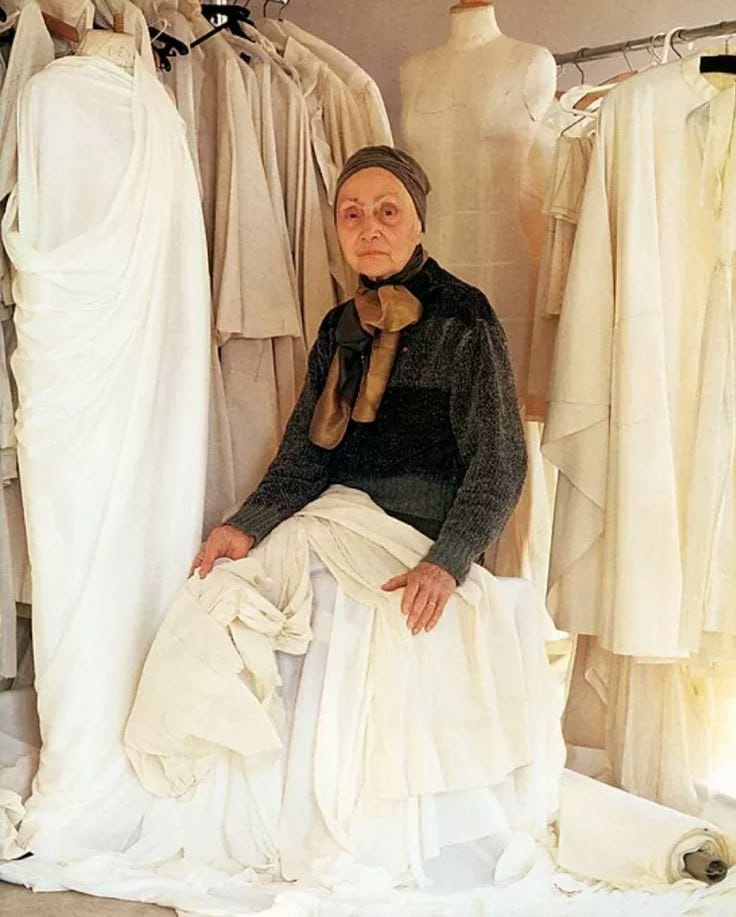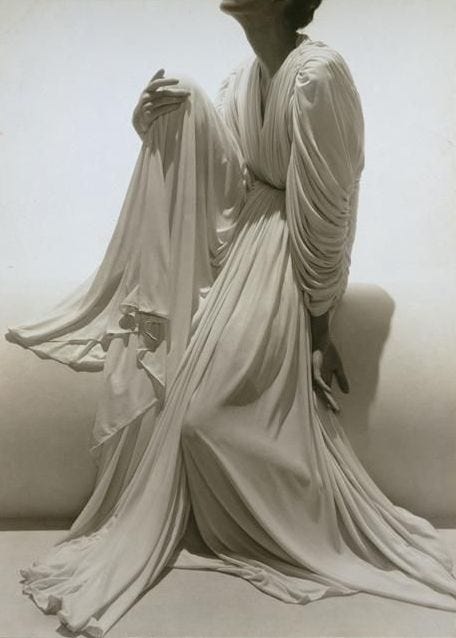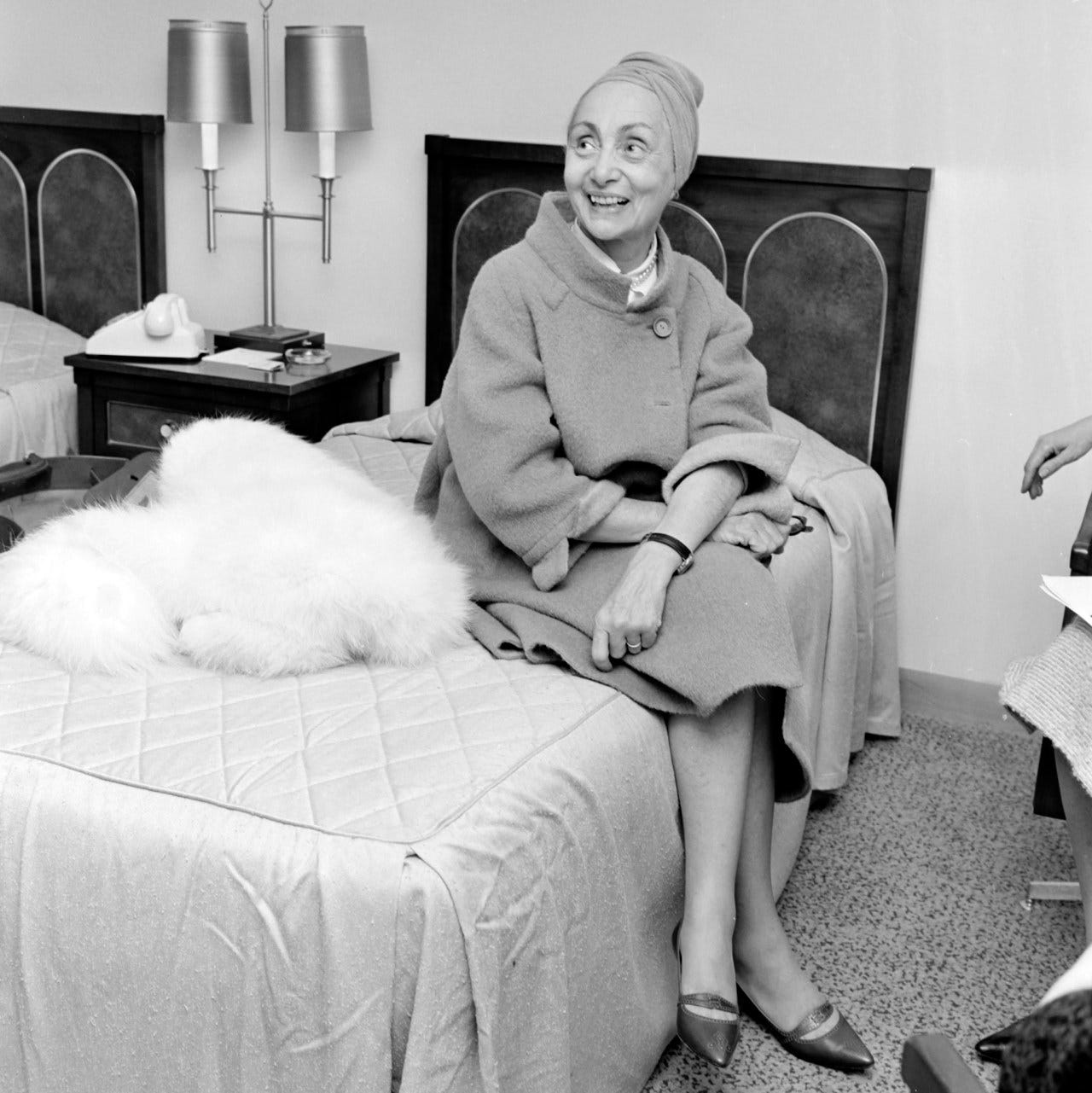Madame Grès, born Germaine Émilie Krebs in 1903, stands as one of the most revered yet enigmatic figures in 20th-century fashion. Known for her sculptural gowns and mastery of drapery, she earned the moniker “the designer’s designer.” With a career spanning decades, Grès fused classical influences with a distinct modernity, leaving a lasting imprint on haute couture. Her work is a testament to purity, precision, and timeless elegance, resonating with designers and artists long after her atelier closed.
Originally aspiring to be a sculptor, Grès studied art before turning to fashion—a background that would heavily influence her design philosophy. She began designing under the pseudonym Alix (La Maison Alix) in the 1932, working on costumes and early couture pieces. By 1942, she had established her own fashion house under the name Madame Grès. She became known for designing her garments directly onto the models. From the beginning, her vision was clear: create garments that celebrated the female form without excess or distraction.

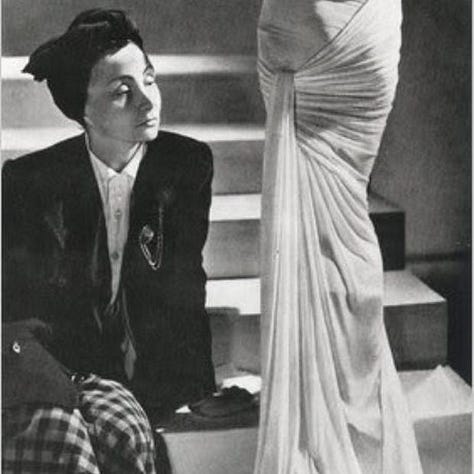
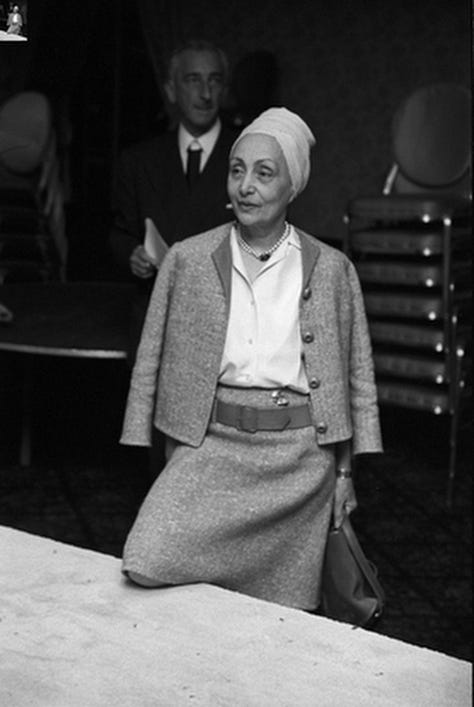
Signature Style and Techniques
Grès best known for her Grecian-inspired gowns, often made of silk jersey, characterised by intricate pleating and impeccable draping. These garments, which appeared almost seamless, flowed like sculptures in motion. Her mastery of fabric manipulation allowed her to create dramatic silhouettes while maintaining a sense of effortlessness and purity. The pleats were often sewn by hand, with some dresses requiring 300 hours to complete. Each pleat was made by hand so that the body would shape the dress, not the opposite.
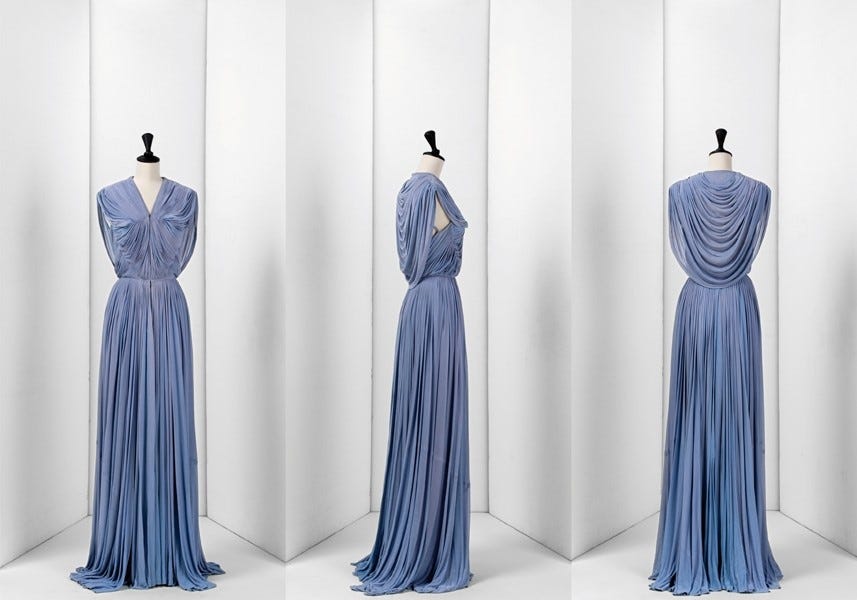
In the 1950s, she experimented with simpler lines and cuts and used ethnic traditions such as saris, kimonos, and serapes for inspiration. She also created some women’s suits.
During the 1970s, she drew her attention to the naked flesh by making vertical peek-a-boo openings in the bodices. The next decade, she launched her first two ready-to-wear collections in collaboration with the designer Peggy Huynh Kinh.
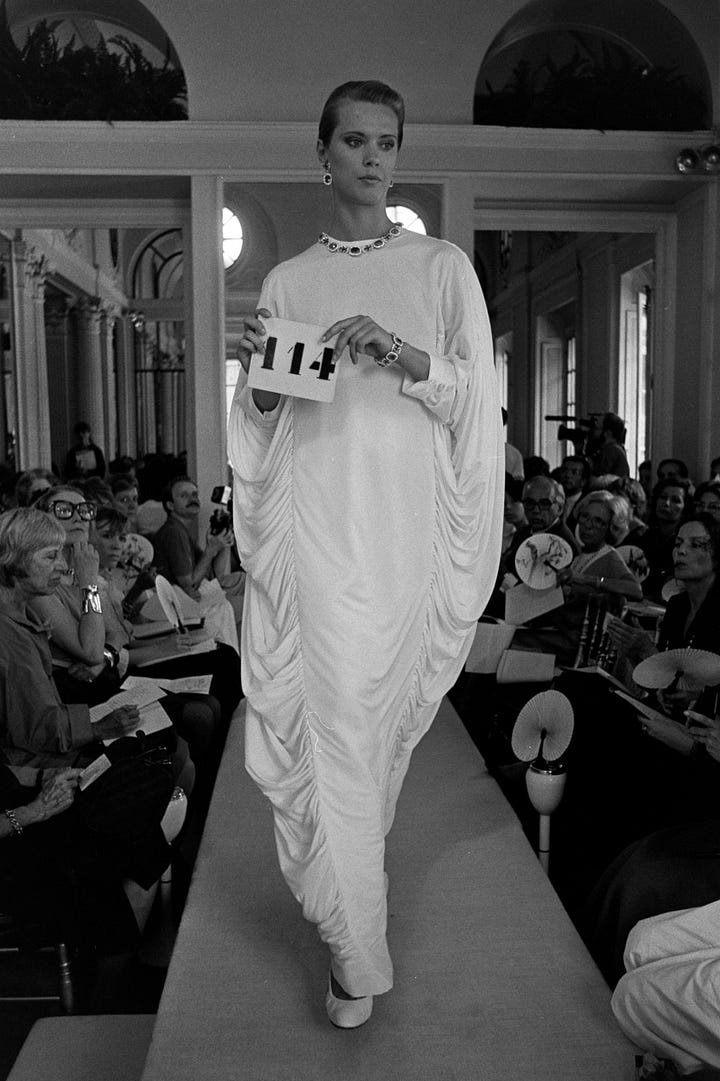
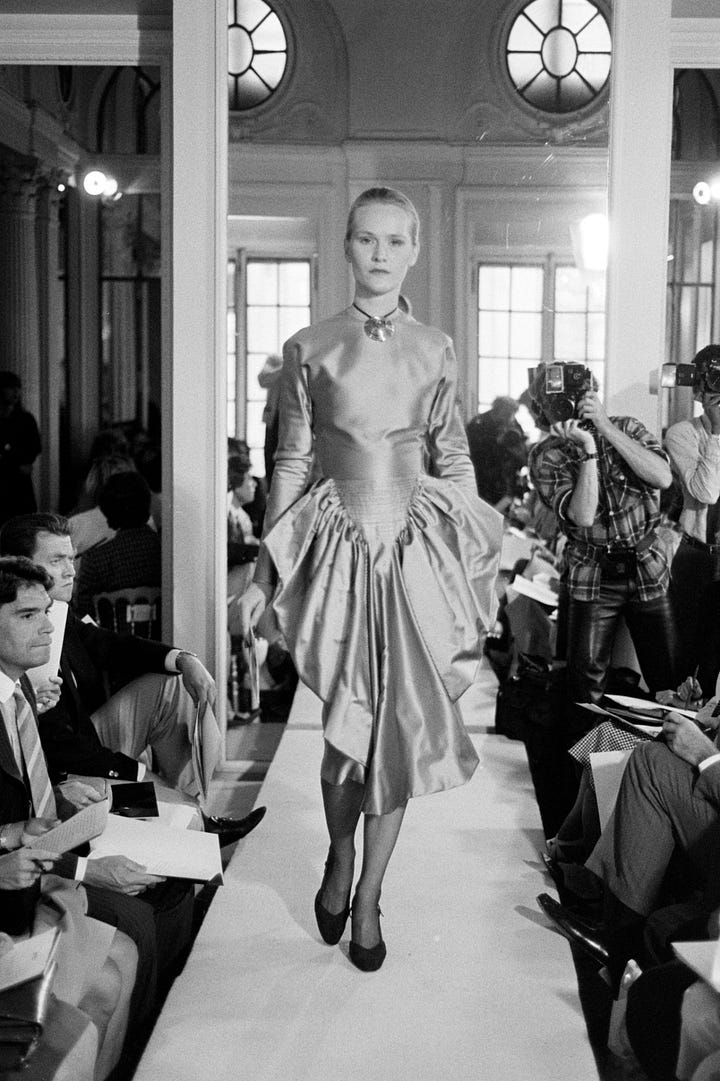
Unlike many contemporaries who followed trends, Grès remained devoted to classical ideals. Her creations emphasized grace, strength, and restraint. She once famously declared, “I wanted to be a sculptor. For me, working with fabric or stone is the same thing.” This sculptural philosophy set her apart in a fashion world often driven by ephemerality.
Influence and Legacy
Though not a household name to the same degree as Chanel or Dior, Madame Grès influenced generations of designers, including Azzedine Alaïa, Yohji Yamamoto, and Issey Miyake. Her commitment to craftsmanship and her minimalist aesthetic presaged the rise of modernist and avant-garde fashion. Even today, her work is referenced in collections that favor fluidity, asymmetry, and artisanal construction.
Her reluctance to commercialize her brand or adapt to ready-to-wear fashion eventually led to financial struggles, and her house was closed in the 1980s. Despite this, retrospectives and museum exhibitions have reignited interest in her work. The Musée Bourdelle in Paris held a major exhibition in 2011, placing her gowns among ancient sculptures—fitting for a designer who treated fabric like marble.
Cited
Bolton, Andrew. The Art of Fashion: Installing Allure. The Metropolitan Museum of Art, 2009.
Mendes, Valerie, and Amy de la Haye. Fashion Since 1900. Thames & Hudson, 2010.
Musée Bourdelle. Madame Grès: La Couture à L'œuvre. Exhibition Catalog, Paris, 2011.
Troy, Nancy J. Couture Culture: A Study in Modern Art and Fashion. MIT Press, 2003.




